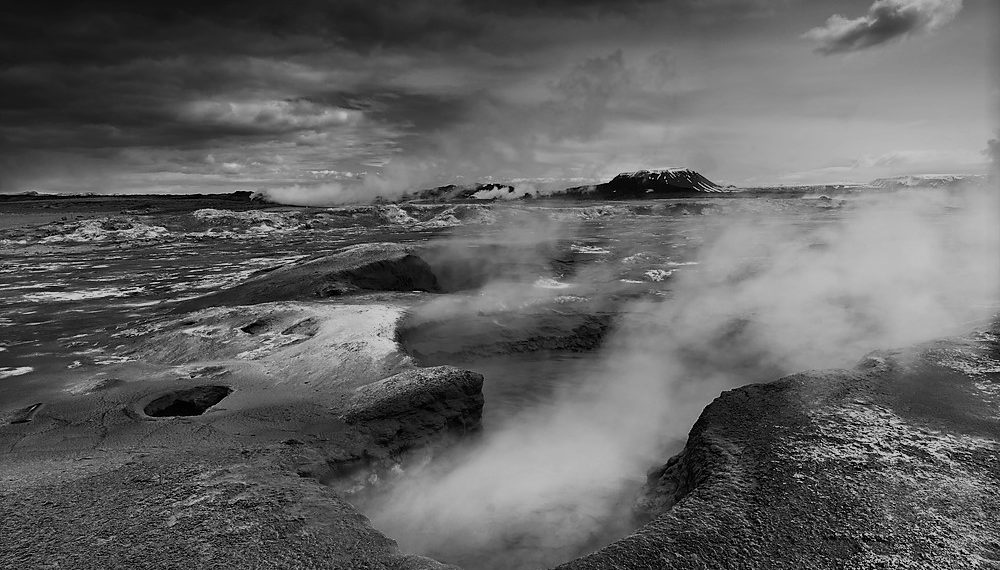
By Renee J. Matthews, Cito Energy Group
Geothermal Energy Potential in Western Canada
There’s a wave of increased interest and investment in geothermal energy as a potentially viable source of renewable power.
From the Greek: γῆ (gê), meaning Earth + θερμός (thermós), meaning hot
Geothermal energy is naturally occurring heat that exists within the interior of the Earth. It is produced primarily from two sources. There is the primordial heat that remains from the formation of the Earth and that continues to emanate from the Earth’s core. Then there is the heat generated from the radioactive decay of elements in the subsurface. With geophysical anomalies, such as faults and fractures, it is possible for us to tap into this energy source by drilling within the conduits where these hot fluids and rocks exist.
- Enhanced Geothermal Systems (EGS): In locations and at geologic depths with reduced rock porosity, technology such as hydraulic fracturing is often used to help stimulate the reservoir to improve permeability and productivity in the circulation of the hot brine to the surface for subsequent heat exchange.
- Advanced Geothermal Systems (AGS): This is an emerging area of geothermal technology which involves using the hot brine or rocks deep beneath the surface, in situ, to heat a piped conductive fluid via convection or conduction. No fluid from the reservoir is pumped to the surface for thermal extraction; rather the subsurface temperatures of the reservoir or rocks heat a highly-conductive fluid circulating within closed-circuit wellbores deep beneath the Earth’s surface – operating much like a radiator.

It’s Heating Up…But Why?
As countries push for ‘Net-Zero by 2050’ with clean and green energy initiatives, Canada too has increased its focus on renewable power generation. Recently, there has been significant investment by both the federal and provincial governments supporting the deployment of geothermal technologies, which in turn is fueling the growth in commercial-scale geothermal power production. Government funding is certainly helping heat things up!
Not only is geothermal energy renewable, it is also reliable. It can contribute to the baseload capacity of regional power generation, unlike wind and solar which are both variable sources of supply. As provinces, like Alberta, seek to phase out power generation from coal assets, geothermal offers a potentially viable (and valuable) alternative, especially where hydropower generation is not possible. Add to this the fact that geothermal energy produces next to zero CO2 emissions and the surface footprint for production is comparably small – wind, hydro and solar installations, for example, require large tracts of land to achieve the commercial scale necessary for economical returns.
The geothermal sector also has the benefit of utilizing decades of geological datasets from a plethora of oil and gas wells that have been drilled in Western Canada. These subsurface datasets can provide valuable information as to the location of prospective geothermal reservoirs with favorable conditions (temperature, pressure, etc.), which help engineers determine where best to invest in new project development.
Lastly, commercial geothermal extraction in the modern era requires a sophisticated understanding of completing deep wellbores, directional drilling, and hydraulic fracturing…all skillsets that fortunately have been developed to an expert level by private oil & gas companies operating within the WCSB.
Who’s Bringing the Heat?

Heat Suppression?
To date, there is only approximately 15.6 GWe of installed geothermal capacity worldwide, which accounts for less than 0.1% of the total global primary energy supply. And of this installed capacity, the vast majority is located in the United States. While geothermal energy has been around forever, globally we are only beginning to harness its potential as part of the clean energy transition.
Although many countries have been ‘slow’ to develop geothermal projects, Canada has actually been in a deep slumber, having yet to build its first geothermal power generating facility.
One of the main impediments to the commercialization of geothermal energy in Western Canada has been the significant capital investment required to fund new projects. The start-up costs associated with geothermal projects are substantially higher than those of wind or solar, for example. This means longer payback periods to profitability. However, these projects often have a longer life span over which to earn a return on the upfront investment.
A second impediment has been the relatively lower cost of producing electricity from coal, hydro, and natural gas resources. The economics of geothermal projects in Canada have simply been uncompetitive in the face of cheaper alternatives.
A potential third emerging impediment is that geothermal electricity generation, much like wind and solar, is location-specific. Remote projects will require new transmission and distribution infrastructure to be built in order to interconnect the baseload supply with the end-user. Since electricity consumers are often located a significant distance away, the capital outlay required to expand existing infrastructure to bring this new capacity online remains to be seen.
Obstacles aside, we must continue to demonstrate the economic case for continued investment from the private sector, because eventually, these projects will have to compete on a $/kWh basis without government subsidies.
In the meantime, for a country that is typically covered in snow and ice for two-thirds of the year, the prospect of geothermal energy heating things up is rather exciting.
About the author

Renee J. Matthews is a Legal Counsel at Cito Energy Group
With a decade of experience in the energy sector advising clients on many of the complex commercial and legal aspects of power projects and oil and gas transactions, Renee now drinks coffee for practical, not poetic reasons. Her practice includes negotiating domestic and international joint venture, joint operating and partnership arrangements, the cross-border acquisition and divestiture of energy assets, and the structuring of upstream oil and gas exploration, development, and production projects. She also assists clients with a variety of corporate/commercial matters pertaining to the development of onshore and offshore oil and gas and power projects around the world.





